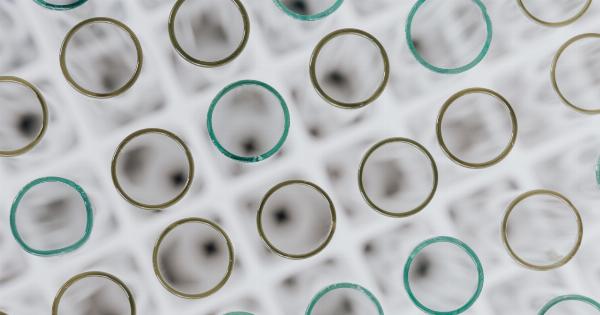In a groundbreaking study, scientists have discovered a previously unknown molecular mechanism that is responsible for aging and reproduction.
This remarkable finding could pave the way for revolutionary advancements in various fields, including medicine and reproductive biology.
The Study
The study was conducted by a team of researchers at a prestigious institute. They aimed to unravel the intricacies of the aging process and its relationship with reproduction.
The team analyzed the genomes of various organisms, ranging from simple model organisms to advanced mammals, in order to identify common elements that may be involved in aging and reproduction.
Discovering the Molecular Mechanism
After years of meticulous research and analysis, the scientists made a striking discovery – a specific gene that plays a crucial role in both aging and reproduction.
This gene, which they named “Fountain of Youth” (FOY), was found to regulate various molecular pathways that influence cell division, DNA repair, and hormone production.
The Role of Fountain of Youth Gene
The Fountain of Youth gene was found to be highly conserved across different organisms, from single-celled organisms all the way up to mammals. Its presence and functionality were essential for maintaining the balance between aging and reproduction.
Cellular Mechanisms
Further examination of the Fountain of Youth gene revealed its involvement in several cellular mechanisms related to aging and reproduction.
One of the key functions of this gene is to prevent the accumulation of DNA damage, which is closely linked to the aging process.
Additionally, the researchers found that the Fountain of Youth gene promotes the production of vital hormones that are necessary for successful reproduction.
These hormones not only regulate fertility but also have significant effects on the overall health and well-being of an organism.
Implications for Aging
The discovery of the Fountain of Youth gene provides valuable insights into the aging process. It opens up new avenues for developing interventions to slow down or reverse age-related decline.
By targeting the specific pathways regulated by this gene, scientists may be able to develop novel therapies that can prolong youthfulness and improve the overall quality of life in later years.
Implications for Reproduction
Understanding the role of the Fountain of Youth gene in reproduction has enormous implications for fertility treatments and reproductive health.
By manipulating the pathways controlled by this gene, researchers may be able to enhance fertility and overcome various reproductive disorders.
Potential Applications
The identification of the Fountain of Youth gene and its associated molecular mechanisms opens up a multitude of potential applications in various fields.
Medicine: The discovery could lead to the development of novel therapeutic strategies for age-related diseases, such as neurodegenerative disorders, cardiovascular diseases, and cancer.
By targeting the Fountain of Youth gene, scientists may be able to slow down the progression of these diseases or even prevent their onset.
Reproductive Biology: The findings of this study could revolutionize assisted reproductive technologies.
By understanding the mechanisms controlled by the Fountain of Youth gene, researchers may be able to enhance the success rates of in vitro fertilization (IVF) and improve overall reproductive outcomes.
Longevity and Anti-Aging: The discovery opens up exciting possibilities for extending human lifespan and promoting healthy aging.
By developing interventions that target the Fountain of Youth gene, scientists may be able to slow down the aging process and delay age-related diseases.
Conclusion
This groundbreaking study has uncovered a previously unknown molecular mechanism that links aging and reproduction. The Fountain of Youth gene plays a crucial role in maintaining the delicate balance between these two processes.
Its discovery opens up new avenues for understanding the biology of aging, improving reproductive health, and developing innovative therapies for age-related diseases. With further research and exploration, scientists may eventually unlock the secrets to prolonged youthfulness and healthier aging.































